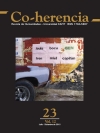Walter Benjamin: dispersion and education in the contemporary era
Main Article Content
Keywords
dispersion, aura, education, attention, contemplation, Benjamin, Heidegger, existence.
Abstract
In this paper I would like to lay out some considerations concerning the concept of dispersion, aimed at the understanding of a decisive dynamic of contemporary life. As a lead, I will use Benjamin’s approach relating to dispersion, extrapolating certain points that allow me to shed some light on present-day education. The idea of dispersion has a story that I would sketch in broad outline in order to distinguish the value-based attitudes raised by the phenomenon, and the difficulty of assigning a positive sense. I will refer to two representatives that I believe maintain profound relative significance and define the philosophical situation of dispersion in the Western tradition: Saint Augustine and Heidegger. From this outline it is possible to grasp the central problem of the ambiguity that accompanies the attitude towards dispersion and its historical correlate, the loss of aura, which can be expressed in the opposition between a liquidationist liberalism or an elegiac conservatism.
Downloads
Download data is not yet available.
References
Adorno, TheodorWiesengrund (2005). Dialéctica negativa. La jerga de la autenticidad. Madrid: Akal.
Arendt, Hannah(1996). Entre el pasado y el futuro. Barcelona: Península.
Benjamin, Walter (2005). El libro de los pasajes. Madrid: Akal.
Benjamin, Walter (2008). Obras. Vol. 2. Madrid: Abada Editores.
Benjamin, Walter (2014). Baudelaire. Madrid: Abada Editores.
Benjamin, Walter (2015). La obra de arte en la época de su reproducción mecánica. Madrid: Casimiro.
Bock, Wolfgang(2010). Vom Blickwispern der Dinge. Würzburg: Könighau-sen und Neumann.
Costello, Diarmuid (2010). “Aura, rostro y fotografía. Releyendo a Benja-min hoy”. En: Alejandra Uslengui (comp.). Walter Benjamin: Culturas de la imagen (pp. 99-140). Buenos Aires: Eterna cadencia.
Crowe, Benjamin (2006). Heidegger’s religious origins. Bloomington: India-na University Press.
Duttlinger, Carolin(2007). “Between contemplation and distraction: Configurations of attention in Walter Benjamin”. En: German Studies Re-view, Vol. 30, No. 1, pp. 33-54.
Eiland, Howard (2010). “Recepción en la dispersión”. En: Alejandra Us-lengui (comp.). Walter Benjamin: Culturas de la imagen (pp. 53-74). Buenos Aires: Eterna cadencia.
Heidegger, Martin (1995). Phänomenologie des religiösen Lebens. Frankfurt am Main: Vittorio Klostermann.
Heidegger, Martin (1997). Estudios sobre mística medieval. México DF: Fon-do de Cultura Económica.
Heidegger, Martin (1998). Ser y tiempo. Santiago de Chile: Editorial Universitaria.
Heidegger, Martin (2001). Sein und Zeit. Tubingen: Max Niemeyer.
Horkheimer, Max y Theodor Wiesengrund Adorno (2009). Dialéctica de la ilustración. Madrid: Trotta.
Kracauer, Siegfried(1963). Das Ornament der Masse. Frankfurt am Main: Suhrkamp.
Kracauer, Siegfried(2006). Estética sin territorio. Murcia: Fundación Caja-murcia.
Platón (1997). Diálogos. Madrid: Gredos.
Tackles, Bruno (2012). Walter Benjamin. Valencia: Publicacions de la Universitat de València.
Uslengui, Alejandra (2010). Walter Benjamin: Culturas de la imagen. Buenos Aires: Eterna cadencia.
Arendt, Hannah(1996). Entre el pasado y el futuro. Barcelona: Península.
Benjamin, Walter (2005). El libro de los pasajes. Madrid: Akal.
Benjamin, Walter (2008). Obras. Vol. 2. Madrid: Abada Editores.
Benjamin, Walter (2014). Baudelaire. Madrid: Abada Editores.
Benjamin, Walter (2015). La obra de arte en la época de su reproducción mecánica. Madrid: Casimiro.
Bock, Wolfgang(2010). Vom Blickwispern der Dinge. Würzburg: Könighau-sen und Neumann.
Costello, Diarmuid (2010). “Aura, rostro y fotografía. Releyendo a Benja-min hoy”. En: Alejandra Uslengui (comp.). Walter Benjamin: Culturas de la imagen (pp. 99-140). Buenos Aires: Eterna cadencia.
Crowe, Benjamin (2006). Heidegger’s religious origins. Bloomington: India-na University Press.
Duttlinger, Carolin(2007). “Between contemplation and distraction: Configurations of attention in Walter Benjamin”. En: German Studies Re-view, Vol. 30, No. 1, pp. 33-54.
Eiland, Howard (2010). “Recepción en la dispersión”. En: Alejandra Us-lengui (comp.). Walter Benjamin: Culturas de la imagen (pp. 53-74). Buenos Aires: Eterna cadencia.
Heidegger, Martin (1995). Phänomenologie des religiösen Lebens. Frankfurt am Main: Vittorio Klostermann.
Heidegger, Martin (1997). Estudios sobre mística medieval. México DF: Fon-do de Cultura Económica.
Heidegger, Martin (1998). Ser y tiempo. Santiago de Chile: Editorial Universitaria.
Heidegger, Martin (2001). Sein und Zeit. Tubingen: Max Niemeyer.
Horkheimer, Max y Theodor Wiesengrund Adorno (2009). Dialéctica de la ilustración. Madrid: Trotta.
Kracauer, Siegfried(1963). Das Ornament der Masse. Frankfurt am Main: Suhrkamp.
Kracauer, Siegfried(2006). Estética sin territorio. Murcia: Fundación Caja-murcia.
Platón (1997). Diálogos. Madrid: Gredos.
Tackles, Bruno (2012). Walter Benjamin. Valencia: Publicacions de la Universitat de València.
Uslengui, Alejandra (2010). Walter Benjamin: Culturas de la imagen. Buenos Aires: Eterna cadencia.




